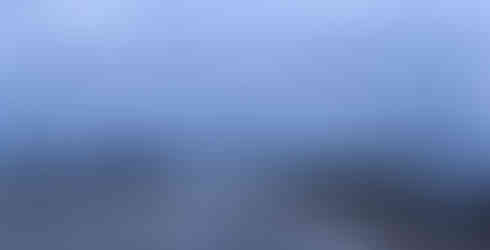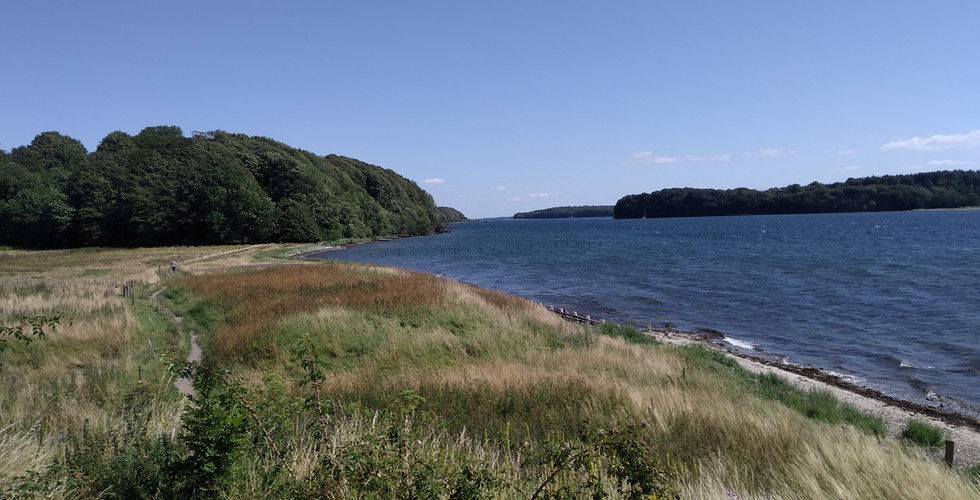Denmark: The Danish Archipelago
- Yvonne O'Connor
- Mar 5, 2023
- 6 min read
There was a checkpoint with little sentry boxes entering Denmark. The line wasn’t long and we were waved through, US license plate and all. I was almost disappointed. I couldn’t get used to driving over borders without having to present a fistful of documents. This particular stop was unusual but it was temporarily set-up in 2016 in response to the migrant crisis and just keeps getting extended. Denmark is part of the EU but we hadn’t realised they’d opted out of the Euro. Since ATMs are never around when you need them, we paid for our first gas with euros. The exchange rate was so awful we resolved to use only plastic in future. Besides, being billed in krone, it was easier to ignore the astronomical prices.
Though the countryside was more of the same flat fields sprinkled with forests, Denmark did feel different. We drove our first of three unforgettable bridges when we crossed the Little Belt strait via the Nye Lillebæltsbro (New Little Belt Bridge). This links the Danish mainland with the the island of Funen where we spent a pleasant evening in a converted farmhouse. Unfortunately the owners had gone to Copenhagen to buy a horse, leaving their 17-year old in charge. He thought he’d save himself some work by pulling up the duvet on the bed occupied by the previous guests and leaving two chocolates on the pillows. I think it spoke well of the Danish people’s hygiene habits that he very nearly got away with it
We were just settling in for a relaxing summer’s evening when I discovered two charges on our debit card for a fuelling we’d made that morning. One was correct but the other, at $120.00, was not. This had happened once before on the morning we left France and was still unresolved. Both gas stations in question were completely unmanned, just rows of robotic-looking silver pumps with cash machines attached. While the credit card company couldn’t explain the French transaction, the bank clarified the Danish charge. It was a “refundable deposit” taken by the gas station who were holding it until the full gas payment reached its account. It was a lesson well learned as we never did manage to find another fuel stop with a live person on site.
To leave Funen and get to the largest island of Zealand we had to cross the 18k long Storebæltsbroen (Great Belt Fixed Link Bridge). It felt like stepping into nothing, then suddenly floating on a narrow strip between low clouds and a navy blue sea below. It had both road and rail traffic and only took 10 minutes to cross instead of the hour-long ferry of the days of old. These two bridges, along with the Øresund Bridge near Copenhagen make it possible to drive straight from the European mainland to the top of Norway. It was impressive to think we could hop on the Ural on the Atlantic coast in Portugal and step off some time later north of the Arctic Circle without ever getting our feet wet.
On a motorcycle it is truly intoxicating to drive all three bridges. With the wind whipping your face, you gulp in the empty blue air. You’ve just caught your breath when a maniacal laugh rises in your throat and you find yourself delirious with the sheer joy of being alive. And when the bridge does you the honour of going on, and on, you settle down and look above at the giant pylons and colossal cables that are keeping you afloat. Decades of planning, vision, cooperation, intelligence and engineering, minds so great you’ll never understand them, they made this. It’s almost too much to take in, so your own little mind just goes, but with monumental feeling,.…..“Wow”.
Click Arrows for Slideshow:
Denmark had the strangest options for affordable accommodations. In Greve we stayed in what was called a Course Centre. It had started out as an agricultural school in 1871 and expanded over the years. We picked-up the key and a set of instructions from a locked mailbox outside reception which closed at 2:00 PM. Our room was in a white building with a steep red tiled roof in a leafy inner stone courtyard. The whole complex was quiet and set among rolling green fields not far from the coast. At a supermarket 10k away, we nosed around inspecting what the Danes liked to eat: lots of fish and good, hearty breads. I surprised myself at the check-out by saying “tak” (thanks) and felt very pleased. All those lockdown nights watching Borgen were finally paying off. “I know “dansk!” I thought smugly, but of course I didn’t. My only other words were “skat” (darling) and “for helvede”, but I couldn’t very well expand my cashier conversation with those. Replying “goddammit darling, thanks!” or even “thanks darling, goddammit!” while pocketing your change is not the way to make friends in foreign lands, or anywhere else.
The earlier instructions proved unhelpful. Basking in the evening sun in the courtyard, the door slammed shut behind Fran who was bringing down some snacks. We were locked-out with nobody answering the emergency phone. Thankfully rescue came in the form of a toddler who’d just learned to walk. The exhausted father in tow may not have been in command of his own situation but handing over his key, he was fully in command of ours. And for that we were mighty grateful.
It was a peaceful occupation, driving in the Danish countryside. We avoided urban areas and Copenhagen and were never far from the sea. Dry, platinum blond plains had herds of grazing deer and in luscious castle gardens, green willows wept into lime-scummed ponds. Cottages, barns and stables lined country lanes, their thatched roofs taking up nearly three quarters of the building. Along the coastal paths, looking out on the islands of the Little Belt strait or at the larger expanse of the Great Belt, grasses undulated in the breeze and the sea glittered a blinding silver blue. Lonely sailboats drifted in the afternoon haze while tiny waves lapped at white shingled beaches. Apart from the odd jolly explorer type, we had many places to ourselves.
Click Arrows for Slideshow:
The curious accommodations continued with a night in a Conference Centre. This building had only been sitting there since 1968. Luckily it had a person on reception but that seemed to be less for overnighters than for exhibit attendees. What a surprise walk it was to our room, along rows of toilet and bidet displays, faucet and flooring samples and the most avant-garde of Nordic lights. Our worn and ancient boots clashed embarrassingly with their designer booths; we looked like vagrants. It made me remember Saturdays in Home Depot, shopping for the very same items a lifetime ago. As we dragged our bags passed casually elegant couples deciding the best look for their heated bathroom floor, I didn’t envy them one bit.
The entire complex was a permanent construction and housing exhibition. When they’d no conferences booked, the sleeping accommodations were rented out. Before we could leave the grounds to the walk to the shore, we had to pass model homes, sunrooms and orangeries. They were all very beautiful and well-designed. I got the feeling if you owned one, you’d just move right in and never have to lift a finger again. But we couldn’t figure out what they were doing there in the middle of the woods. As it turned out, the origins were rooted in history, with all being owned by a foundation set-up after the war to support reconstruction in Europe.
Our third and final bridge was the Øresundsbro which links Copenhagen with Malmö in Sweden. This would bring us into Scandinavia proper and was a special crossing for me, for reasons I’ll explain later. By the time we returned to Denmark from Sweden, the weather had changed and the wind was howling. The same three straits had to be crossed again and the return on the Øresundsbro was more gusty than glorious. We were relieved to get off it but I’d forgotten how much longer the Great Belt was and it was still ahead. For the entire span I huddled down inside the sidecar and prayed Fran could keep us steady. Thankfully the railway line alongside us was empty because cars were being blown over the white lines and the little Dutch caravans were swinging. Rising out of a black-blue sea the row of windmills to our right were spinning frantically, their white sails matching the choppy white horses swirling below. A grey naval ship passed silently beneath, giving the impression of being the only steady thing around.
But in the end we survived the dire straits and lived to tell the tale. After one last night we drove south to the border. It was Sunday and across the divider there was a very, very long queue of cars waiting to get in. Either a lot of people wanted to holiday in Scandinavia or the Danes had spent the weekend shopping just across the German line in Flensburg. I could imagine these happy consumers, loading up on cheap beer, spirits and chocolate. And I suspect the cashiers there might simply smile when waved good-bye with a cheerful “God…dammit darling! Thanks!”






























Comments